Alvin Album: Deep-Sea Vehicle Prepares for New Adventures
Exploring the Deep
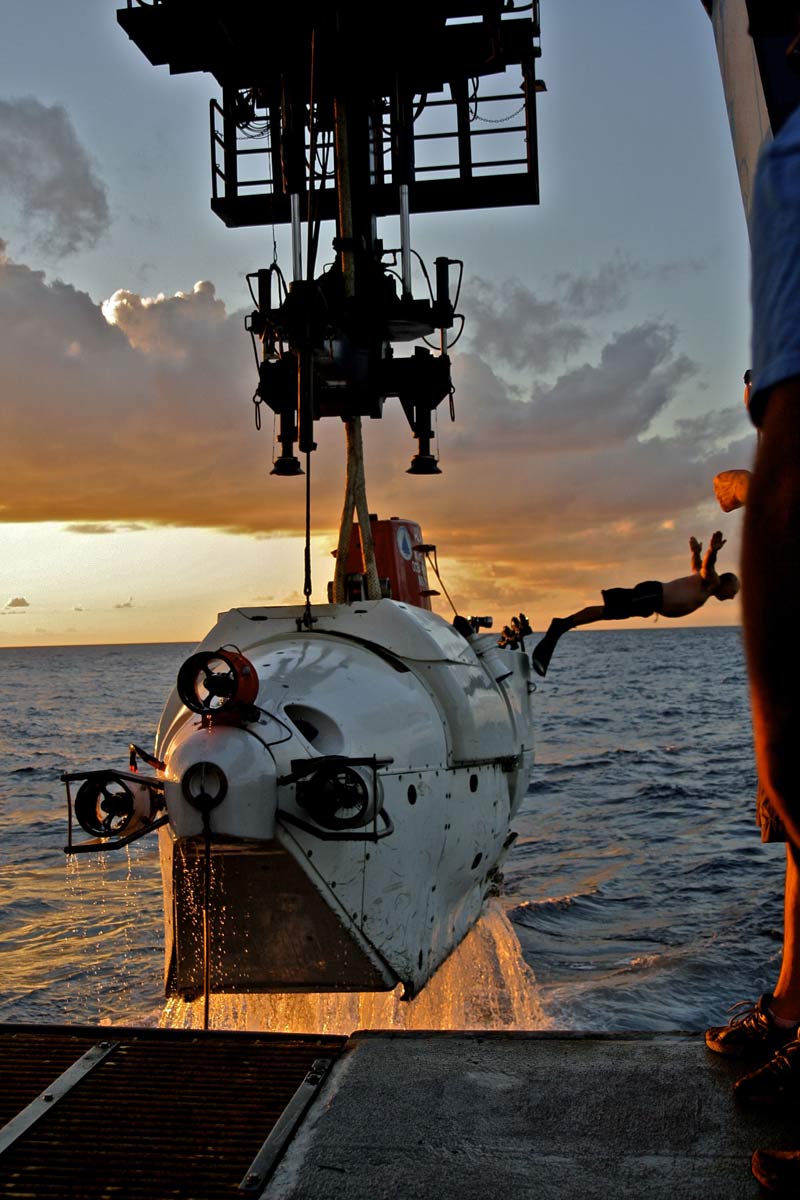
Alvin, which can ferry three people into the deep sea, has made 4,664 dives in its 50-year century career. It has allowed humans to see, firsthand, the wreckage of the doomed Titanic, enabled researchers to explore the alien landscape of the deep seafloor and discover its strange inhabitants. Here’s a look at where Alvin’s been, and a project to upgrade it for future missions. Above, a swimmer, Jim McGill, dives from Alvin at sunset.
Strange Structures on the Seafloor
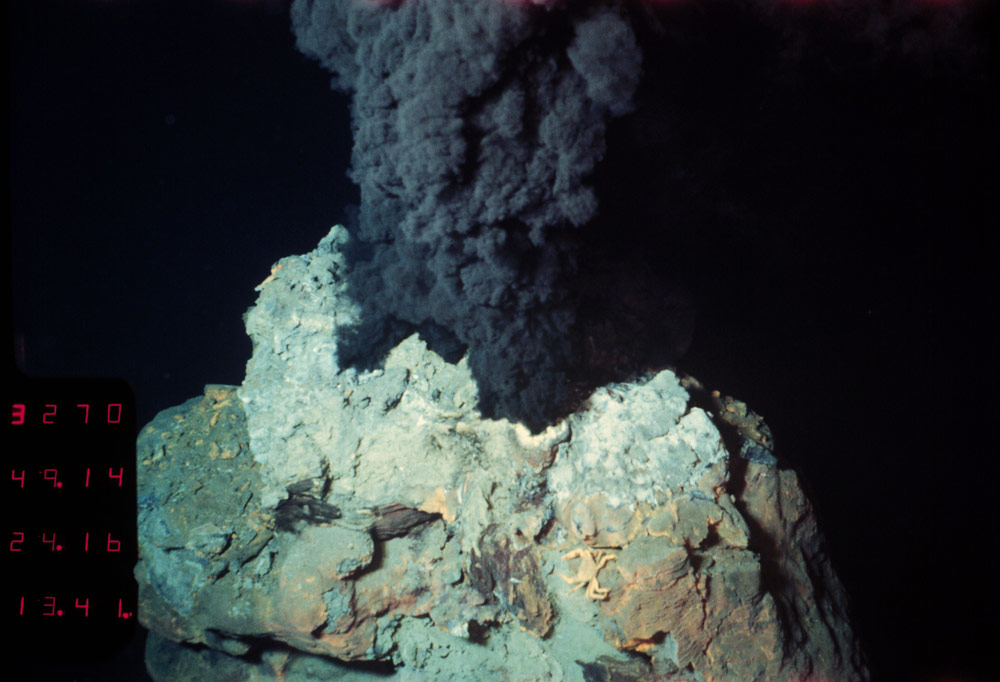
Alvin’s missions have included exploring hydrothermal vents on the seafloor. Above, a photo taken by Alvin shows hot water laden with minerals pouring from a vent structure known as a black smoker chimney. This chimney was part of a hydrothermal vent field.
Chimney Sweep

Alvin’s arm probes a black smoker chimney at a hydrothermal vent field. In the dark depths of the ocean, life teems around these vents.
An Investigation
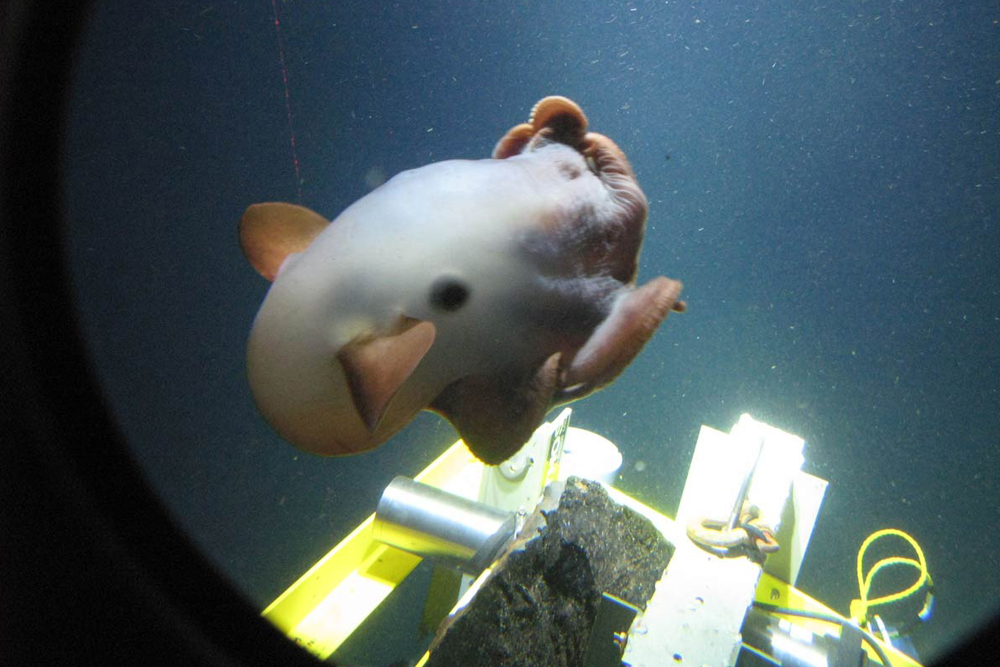
Missions by Alvin and other deep-sea submersibles have allowed scientists to discover new species of deep-dwelling creatures. Above, a dumbo octopus, a type of octopus named for its resemblance to the cartoon elephant, investigates Alvin.
On Deck
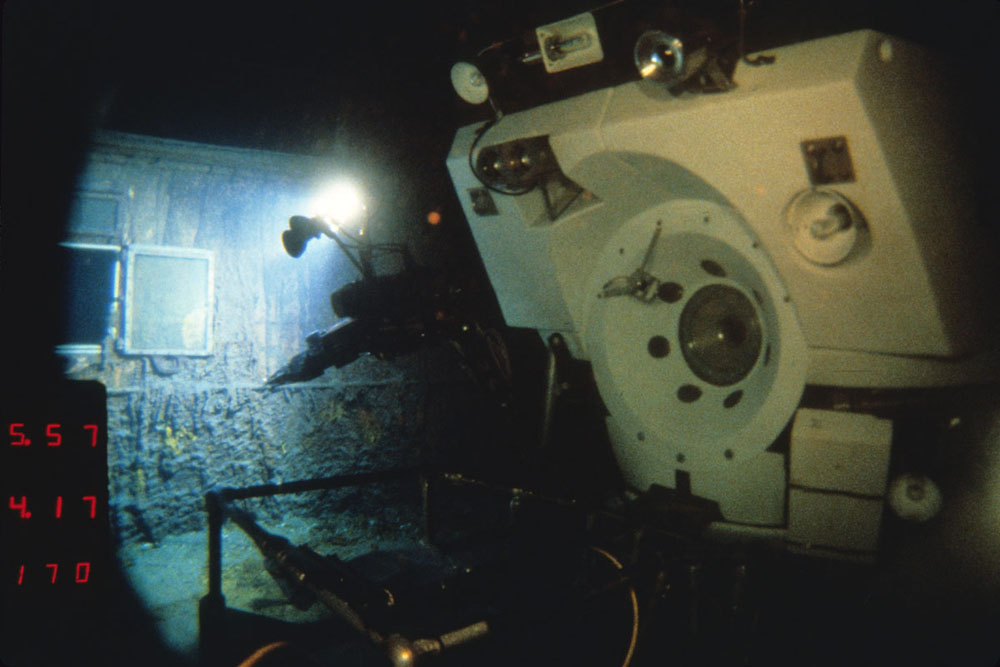
Researchers used Alvin to explore the wreck of the RMS Titanic in 1986 after it was discovered a little more than 2 miles (3.8 kilometers) below the ocean surface, 329 miles (530 km) southeast of Newfoundland, Canada. Above, Alvin on the deck of the Titanic in a photo taken by the remotely operated vehicle, Jason Jr.
A Peek Inside

An image taken by Alvin shows the vehicle Jason Jr. peering inside a stateroom in the Titanic. While Alvin is operated by a pilot inside it, a pilot above the ocean’s surface operates Jason Jr. remotely.
Alvin’s Ride

Alvin gets washed down on board the Atlantis, a research vessel that ferries it to and from dive sites.
Get the world’s most fascinating discoveries delivered straight to your inbox.
Preparing for an Upgrade
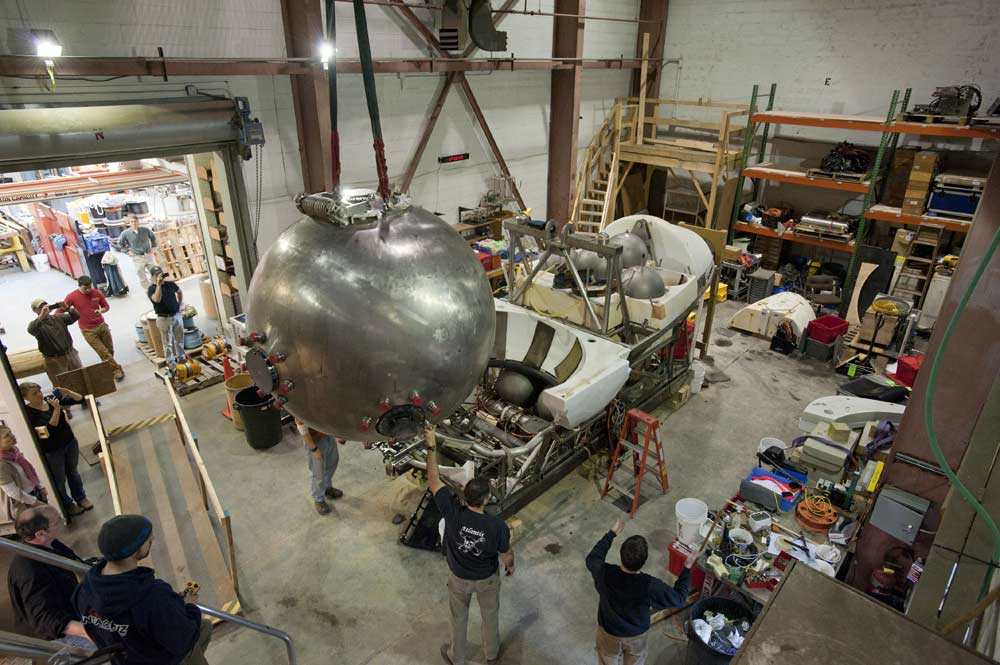
Above, Alvin is disassembled in preparation for an upgrade. The first stage, which is currently underway, incorporates changes intended to improve the view of those riding inside, upgrade its imaging systems, double the weight of scientific samples it can carry back to the surface and make other changes. The sphere being removed from the frame above carries the pilot and passengers.
On the Inside
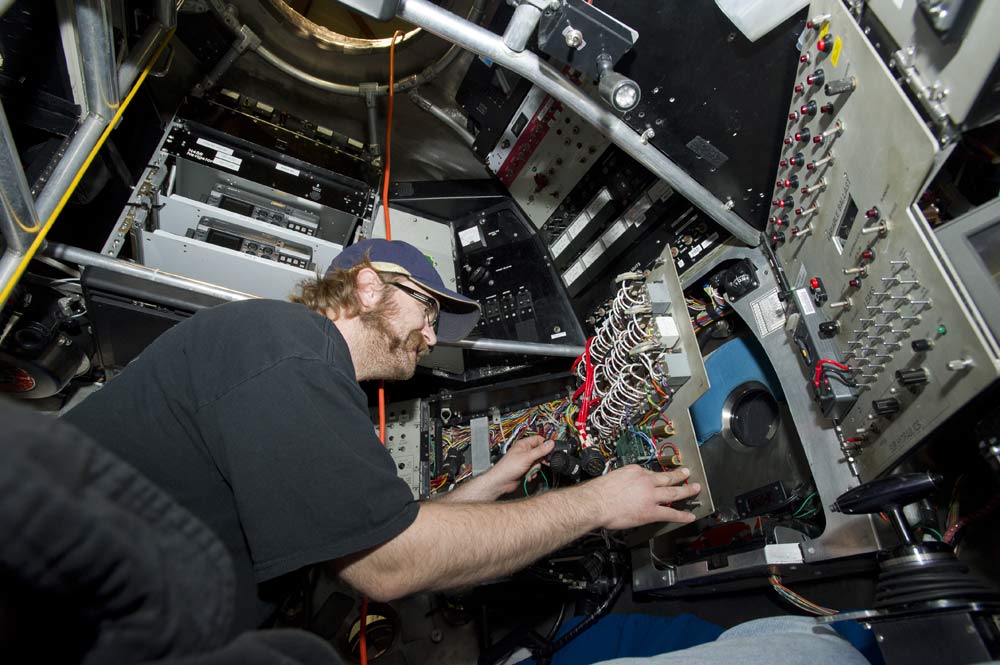
Korey Verhien working inside the Alvin personnel sphere during the disassembly.
Red Hot Titanium
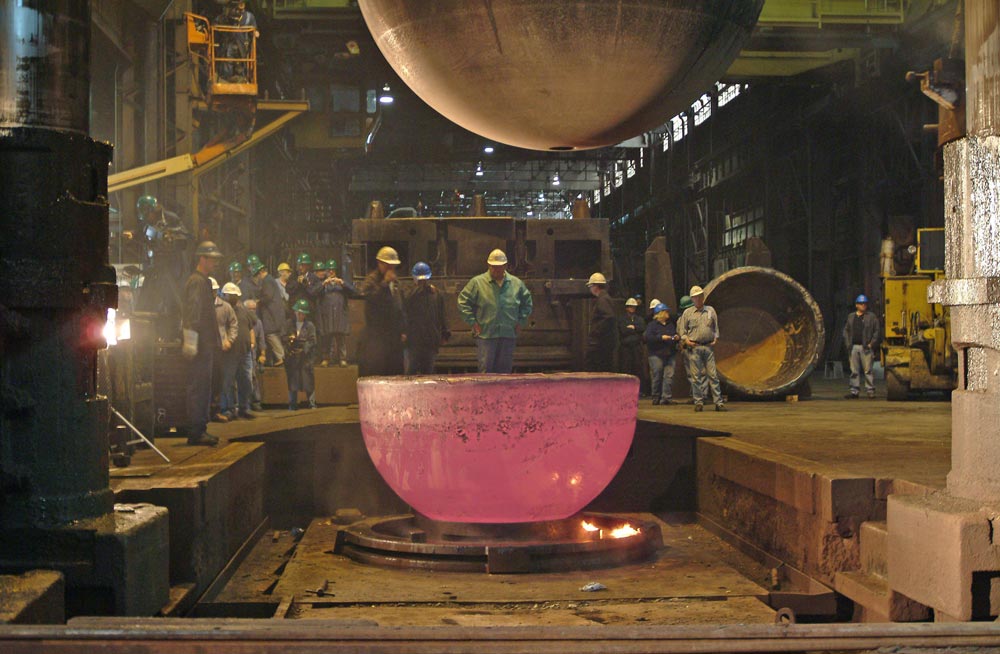
A new, slightly larger sphere was forged from titanium to replace the old personnel sphere. Above, one of two new hemispheres cools.
A New Sphere
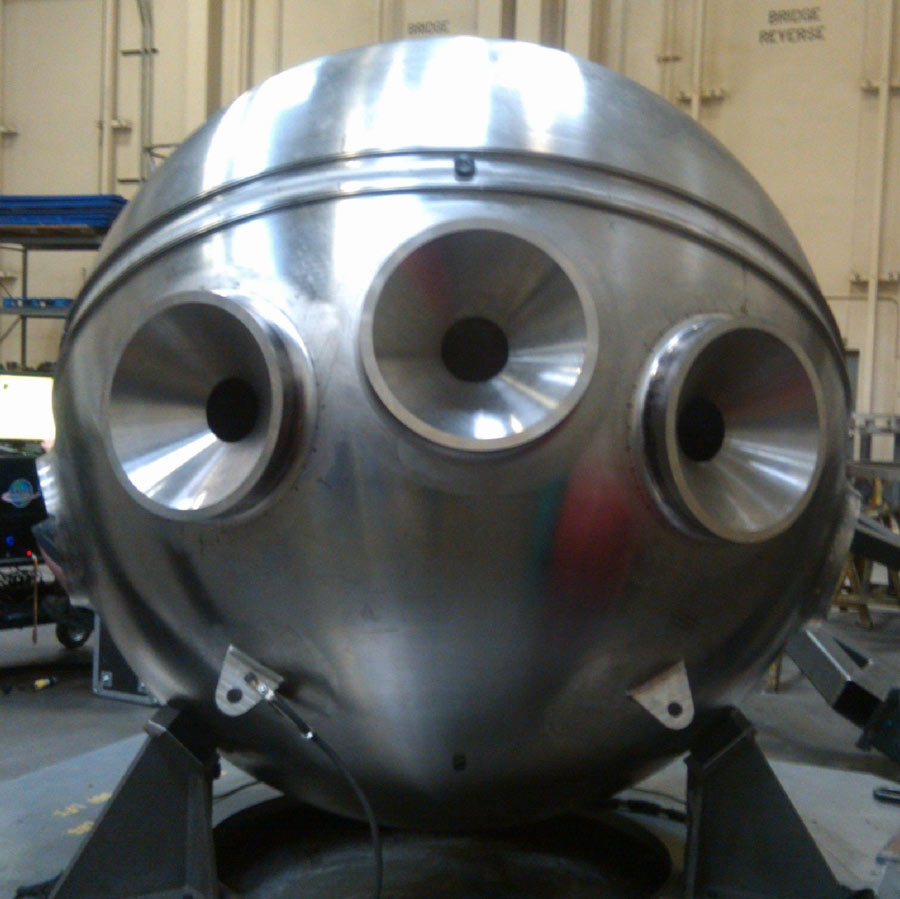
The new sphere features five viewports, two more than the old configuration, arranged to provide overlapping fields of view for the pilot and two passengers.

